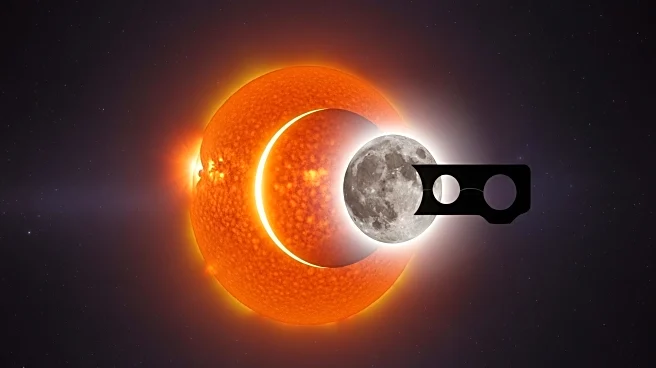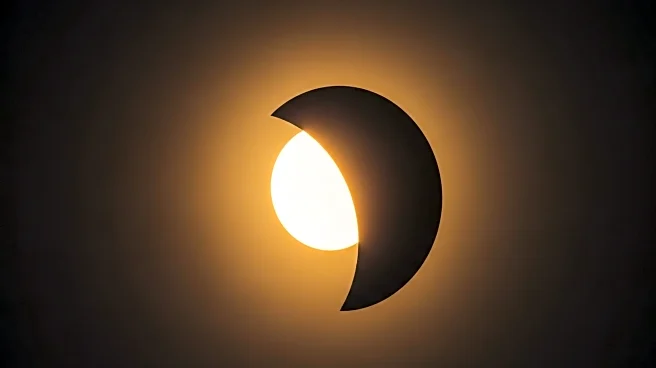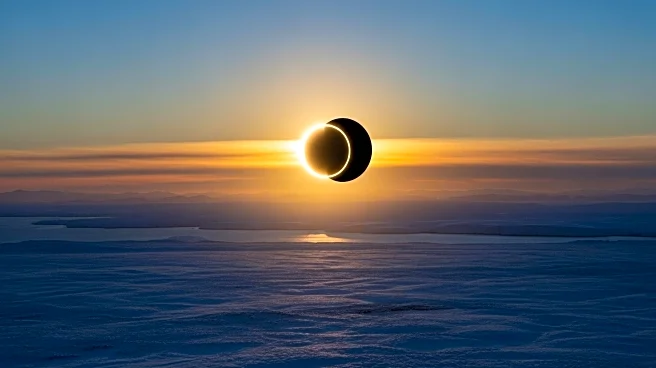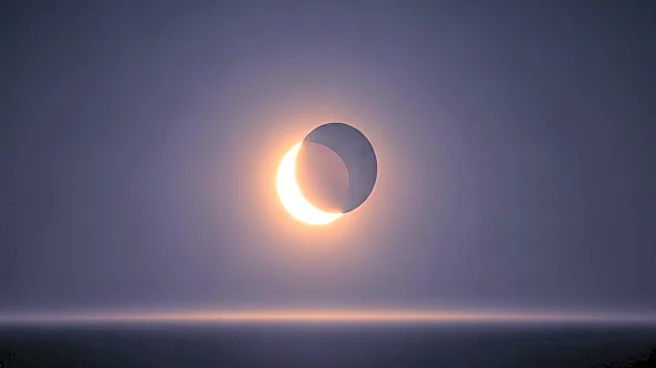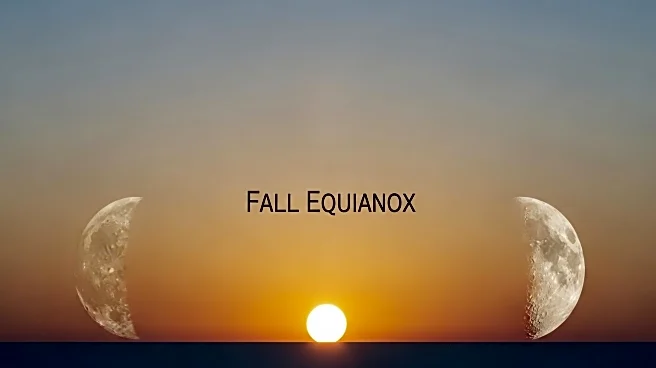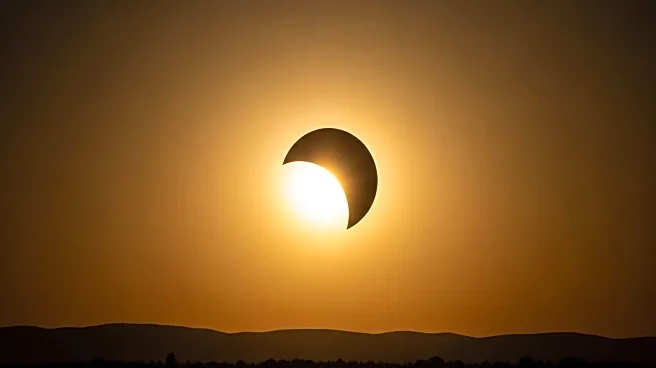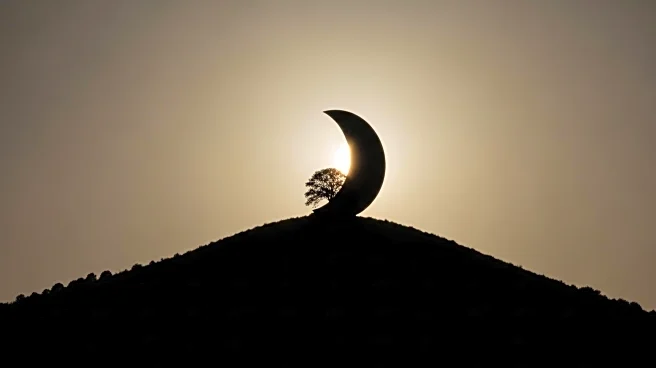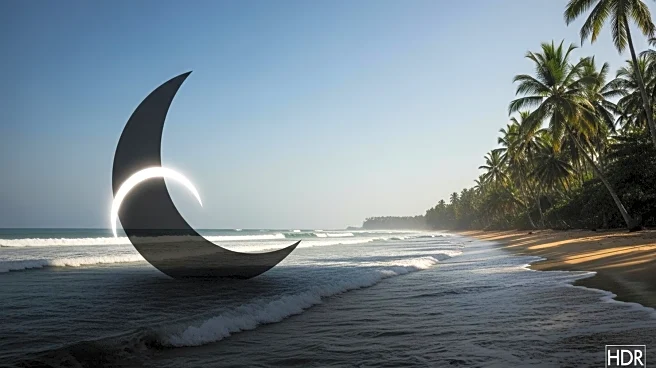What's Happening?
A partial solar eclipse is set to occur on September 21, but it will not be visible from the United States. According to reports, the eclipse will be observable in the Southern Hemisphere, including regions such as Australia, New Zealand, Antarctica, and nearby oceans. The event will begin at approximately 1:29 pm ET and reach its peak at 3:41 pm ET. This celestial phenomenon follows the April 2024 total solar eclipse that captivated millions across North America. Unlike the total eclipse, the upcoming event will only partially obscure the sun, creating a visual effect akin to a bite taken out of the sun. For U.S. viewers, the eclipse can be watched through live streams and NASA's online coverage.
Why It's Important?
Eclipses are significant for their rarity and the scientific interest they generate. While this particular eclipse will not be visible in the U.S., it highlights the global nature of astronomical events and the importance of international collaboration in space observation. The event serves as a reminder of the advancements in technology that allow people worldwide to experience such phenomena through digital platforms. For the scientific community, eclipses offer opportunities to study solar dynamics and the moon's orbit. The absence of visibility in the U.S. underscores the need for continued investment in space exploration and public engagement through virtual means.
What's Next?
For U.S. stargazers, the next opportunity to witness a solar eclipse will occur in future years. Meanwhile, NASA and other astronomy platforms will provide comprehensive coverage of the September 21 eclipse, ensuring that enthusiasts can experience the event remotely. This approach may lead to increased interest in astronomy and space science, potentially influencing educational programs and public policy related to space exploration.

